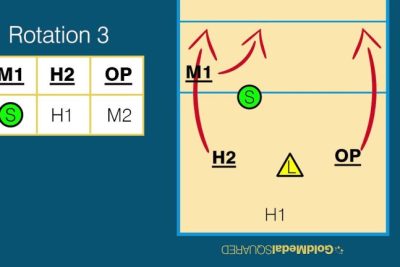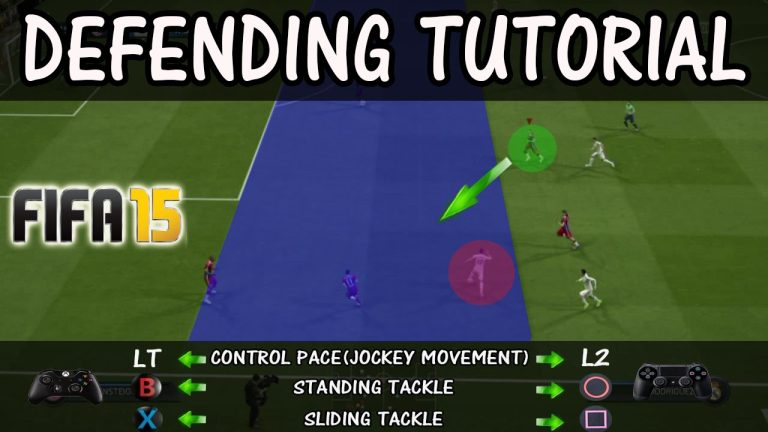
Are you tired of the same old volleyball strategies? Look no further! Introducing the 4-2 volleyball system, a game-changing approach that will revolutionize the way you play. This innovative system involves four hitters and two setters, allowing for increased versatility, effective rotations, and relentless attacks. Whether you’re a seasoned player or just starting out, the 4-2 system is sure to elevate your game to new heights. Get ready to unleash the power of this dynamic strategy and dominate the court like never before.
What does the term 4 2 system refer to in volleyball?
The 4-2 system in volleyball is an offensive strategy that involves four players designated as attackers and two players as setters. The two setters are strategically positioned opposite each other, typically in zones 1 and 4. This setup allows for efficient ball distribution and enables the team to have options for attacking from different angles. The middle players are positioned in zones 3 and 6, while the outside attackers occupy zones 2 and 5, following the rotation order of the setters. This system optimizes the team’s attacking potential while maintaining a balanced formation on the court.
In the 4-2 system, four players take on the role of attackers, while two players serve as setters. The setters strategically position themselves in zones 1 and 4, opposite each other, to facilitate effective ball distribution. This formation allows for flexibility and versatility in attacking from various angles. The middle players are positioned in zones 3 and 6, while the outside attackers occupy zones 2 and 5, following the setters’ rotation order. By implementing this system, teams can maximize their offensive capabilities while maintaining a well-structured formation on the volleyball court.
What differentiates a 6-2 from a 4 2?
A 6-2 is a volleyball formation that differs from a 4-2 in terms of the number of attackers and setters. In a 6-2, there are six attackers and two setters, whereas a 4-2 has four attackers and two setters. The key distinction lies in the role of the setter – in a 6-2, the back row setter always sets the ball, which means the setter becomes a hitter only when they are in the front row. This strategic adjustment allows for more flexibility and options in offensive plays.
By incorporating six attackers and two setters, the 6-2 formation provides teams with increased attacking power and versatility. With two setters on the court, there is a greater opportunity to distribute the ball to different attackers, creating a more unpredictable offensive strategy. The back row setter’s ability to always set the ball ensures a consistent and effective distribution of plays, making it harder for the opposing team to anticipate and defend against.
In summary, the main difference between a 6-2 and a 4-2 formation lies in the number of attackers and setters. While both formations have two setters, a 6-2 incorporates six attackers compared to the four attackers in a 4-2. The back row setter in a 6-2 always sets the ball, allowing for a dynamic offensive strategy and ensuring consistent distribution of plays. This strategic adjustment provides teams with increased attacking power and versatility, making the 6-2 an appealing option for many volleyball teams.
What is the meaning of a 6-2 in volleyball?
In volleyball, a 6-2 formation refers to the number of hitters and setters on the court. The first number, six, signifies the presence of six hitters, while the second number, two, represents the number of setters. Typically, the team will have three front-row hitters and a back-row setter initially. After three rotations, the setter transitions to the front row and assumes the role of a hitter. This dynamic formation allows for a balanced distribution of offensive play and sets the stage for strategic gameplay.
Mastering the 4-2 Volleyball System: Elevate Your Team’s Performance
Mastering the 4-2 volleyball system is the key to elevating your team’s performance on the court. This dynamic strategy involves having four hitters and two setters, creating a well-rounded offense and defense. By implementing this system, teams can maximize their attacking options while maintaining a strong defensive presence. The 4-2 system allows for seamless transitions between offense and defense, ensuring smooth gameplay and increased success.
One of the most significant advantages of the 4-2 volleyball system is its versatility. With two setters on the court at all times, teams have the flexibility to set up various attacking options. This creates confusion for the opposing team, as they struggle to predict where the ball will be set next. The 4-2 system also allows for quick adjustments during the game, enabling teams to exploit the weaknesses of their opponents and maintain an offensive edge.
In addition to its flexibility, the 4-2 system enhances team communication and coordination. With two setters on the court, players have more opportunities to communicate and strategize during the game. This leads to better teamwork and improved overall performance. The 4-2 system also fosters a sense of trust and unity among teammates, as everyone plays an essential role in executing successful plays. By mastering this system, teams can enhance their communication skills and ultimately elevate their performance to new heights.
In conclusion, mastering the 4-2 volleyball system is a game-changer for any team looking to improve their performance. This versatile strategy allows for various attacking options and seamless transitions between offense and defense. Additionally, it enhances team communication and coordination, leading to better teamwork and overall success. By implementing the 4-2 system, teams can elevate their game and become a force to be reckoned with on the volleyball court.
Unleashing Team Excellence: The Power of the 4-2 Volleyball System
Unleashing Team Excellence: The Power of the 4-2 Volleyball System
In the world of volleyball, the 4-2 system stands out as a powerful tool to unlock team excellence. This innovative strategy involves having four hitters and two setters on the court, allowing for greater flexibility and coordination. With this system, teams can seamlessly transition between offensive and defensive plays, maintaining a strong presence at all times. By unleashing the potential of the 4-2 system, teams can elevate their performance to new heights and dominate the game.
One of the key advantages of the 4-2 volleyball system is its adaptability. With two setters on the court, teams can quickly adjust their strategy based on the opponent’s strengths and weaknesses. This flexibility enables teams to counter any defensive line-ups and exploit openings in the opponent’s defense. By maximizing the potential of each player, the 4-2 system creates a cohesive unit that can efficiently navigate the game and outmaneuver the opposition.
Moreover, the 4-2 system fosters a sense of unity and teamwork among players. With four hitters, each player has an equal opportunity to shine and contribute to the team’s success. This balance ensures that no player is overburdened or overlooked, leading to a harmonious and efficient gameplay. By harnessing the power of collaboration and shared responsibility, teams can achieve excellence and achieve remarkable results on the volleyball court.
In conclusion, the 4-2 volleyball system is a game-changer that empowers teams to achieve excellence. With its adaptability, balance, and emphasis on teamwork, this system revolutionizes the way teams approach the game. By unleashing the potential of the 4-2 system, teams can dominate the court, leaving their opponents in awe of their skill and coordination.
Incorporating the 4-2 volleyball system can revolutionize the way teams approach their gameplay. By utilizing two setters, teams can benefit from increased flexibility and strategic options. This system allows for efficient ball distribution and effective offensive plays, maximizing the team’s chances of success. With its balanced approach and emphasis on teamwork, the 4-2 system is a valuable tool for any volleyball team looking to enhance their performance on the court.







